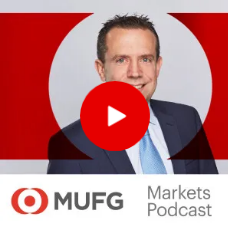- Survey evidence continues to paint a picture of stabilising activity at the start of 2024 but there are hints of some potential for cyclical improvement in the months ahead. The outlook for the UK and non-core euro area members looks brighter, while the German economy continues to struggle.
- The ECB left rates on hold this week as expected. There was less in the way of explicit pushback against expectations for early rate cuts than we anticipated however, with policymakers looking to keep their options open. The overall picture remains one of a central bank that seems quietly confident that its policy is working but may still err on the side of caution before saying ‘job done’ on inflation.
- Next week, the BoE may have some more credible reasons to be cautious about underlying inflation pressures, despite an improved UK inflation outlook.
- A range of key data will also be released next week. We expect to see that the euro area economy slipped into a mild technical recession in H2 2023 – but the overall picture is one of stagnation rather than crisis. Meanwhile, euro area inflation probably resumed its downward path in January.
Survey evidence points to stabilisation at the start of 2024
A range of business and consumer surveys released this week for January provided an update on the degree of economic momentum at the start of 2024. The euro area composite PMI increased to 47.9 (from 47.6), a 6-month high. By sector, the improvement was led by a recovery in manufacturing, which more than offset a slightly softer services figure.
By country, the composite PMI figures for both Germany and France both weakened. The euro area aggregate that excludes these two countries is now back into expansion territory at 50.9 (Chart 1), with core euro area economies continuing to find it relatively tough going. Indeed, the German ifo survey, normally a reliable growth indicator, deteriorated in January (Chart 2). The German economy likely contracted in Q4 last year and, as yet, there are few indications that momentum has improved in 2024.
Chart 1: Brighter outlook for the UK at the start of 2024

Chart 2: No pick-up in momentum in Germany in 2024

By country, the composite PMI figures for both Germany and France both weakened. The euro area aggregate that excludes these two countries is now back into expansion territory at 50.9 (Chart 1), with core euro area economies continuing to find it relatively tough going. Indeed, the German ifo survey, normally a reliable growth indicator, deteriorated in January (Chart 2). The German economy likely contracted in Q4 last year and, as yet, there are few indications that momentum has improved in 2024.
The broader picture for the euro area as a whole is one of stagnation rather than crisis. We are now seeing hints of stabilisation, albeit at levels still consistent with a GDP contraction. That said, better forward-looking components in the PMI combined with the improvement in the manufacturing gauge does suggest some cyclical improvement in activity to come in the months ahead.
Meanwhile, the UK outlook continues to look relatively bright. The UK composite PMI figure continued to improve to 52.5, a 7-month high. Figures today showed that UK consumer confidence is now at the highest level in two years as inflation pressures ease (again, this is in contrast to the euro area where consumer confidence unexpectedly weakened in January).
Our latest 2024 outlook for both the euro area and UK can be found here. The UK may have started the year on a better footing but it’s likely to be a similar story for each economy: a recovery in households’ real income combined with some monetary easing should support stronger growth, especially in H2.
ECB review: Retaining flexibility
The ECB left rates unchanged at yesterday’s meeting as expected, maintaining the holding pattern that has been in place since the last hike in September. It was a fairly low-key meeting with no significant change in tone. The statement noted again that tight financing conditions “are dampening demand” and that is “helping to push down inflation”.
After a concerted effort from senior ECB officials to steer expectations away from earlier rate cuts in recent weeks (see here) there was less pushback at the meeting itself than we had expected. With the euro area unemployment rate at an all-time low, the ECB could have leant more on labour market tightness as a reason to worry about persistent pay pressures. As it was, President Lagarde acknowledged that the Indeed wage tracker – one of the timeliest indicators of pay growth – seems to have peaked (Chart 3). She also noted that measures of inflation expectations “have come down markedly” (Chart 4). There wasn’t much made of the effect on shipping costs on inflation following recent geopolitical tensions, either.
Chart 3: Nominal wage growth looks to have peaked

Chart 4: Inflation expectations have fallen

In general, Lagarde’s discussion of recent data felt like a fair reflection of the current situation rather than an attempt to steer expectations one way or another. This means that her insistence that the ECB will be “data dependent” rather than “date dependent” regarding rate cuts seems somewhat credible.
That said, the work done prior to the meeting to guide expectations towards a later move (see here) can’t be discounted. Lagarde also said there is a consensus that it was “premature” to discuss rate cuts. The overall picture remains one of a central bank that seems quietly confident that its policy is working but may err on the side of caution before saying ‘job done’ on inflation. The lack of explicit pushback against market expectations for an earlier move likely reflects the ECB’s desire to keep its options open. Given that, an April rate cut remains possible (see here).
Our view is that, after the December blip, inflation will continue on a generally downward slope this year with underlying price pressures continuing to ease against the backdrop of weak demand. Meanwhile, input price data suggests that food prices may start to contribute negatively to headline inflation rates, and gas prices have also fallen at the start of the year after Europe successfully navigated a cold snap. The main upside risk factors relate to geopolitical risks in the Middle East but, while shipping costs are increasing, the evidence from business surveys in January suggests only a small effect on manufacturing input prices so far. All told, we expect headline euro area inflation will fall back to the ECB’s target by around mid-2024. In the absence of any upside shocks on wage growth, the path to rate cuts should be clear.
BoE preview – Some reasons for caution
The Bank of England is set to keep its policy rate unchanged at 5.25% at next week’s meeting (which will be accompanied by updated projections and a press conference). There could be a slightly dovish shift – the current tightening bias (“further tightening in monetary policy would be required if there were evidence of more persistent inflation pressures”) could be softened, for example – but we don’t expect a major policy tilt.
Since the last meeting, UK inflation edged slightly higher and the BoE has flagged that the rate could rise further in January after some unusual services price increases at the start of 2023. However, the Q4 average CPI rate of 4.2% easily undershoots the BoE November forecast (4.6%). A sizeable downgrade to the BoE’s headline CPI projection in the new update is therefore likely (Chart 5). Looking ahead, lower wholesale gas prices point to a considerable fall in household energy prices from April under the UK’s energy price cap system. Input price data suggests that consumer food prices should also continue to ease through the year. Meanwhile, there’s mounting evidence that underlying price growth is easing with the seasonally-adjusted 3m annualised core rate now close to target (Chart 6). This means that, after much talk about the UK’s relative inflation problem (see here for our take last spring), the headline rate of UK inflation could very plausibly fall back to the BoE’s 2% target by the summer.
Chart 5: The BoE is set to revise its CPI projection lower

Chart 6: Underlying inflation pressures have eased

Despite this improved inflation outlook, the BoE has credible reasons to still be cautious about underlying price pressures. While official wage growth has fallen, it remains uncomfortably high from a monetary policy perspective at 6.6% (ex. bonuses, 3M Y/Y) in November. The timelier PAYE estimate for December suggested that total pay growth may have edged up at the end of the year. The UK minimum wage will also increase by 9.8% from April. On services inflation, many mobile and broadband contracts will also increase in April by the December rate of CPI plus 3.9pp (i.e. 7.9%).
There may also be some concerns that fiscal and monetary policy will increasingly pull in opposite directions. We expect some tax cuts in the Spring Budget (6 March) ahead of the next UK general election – the downward shift in rate expectations over recent months combined with the slightly faster-than-expected disinflation process may have given the chancellor some room to do so without upsetting gilt markets. It’s possible that there could be further pre-election giveaways announced in October/November as well, if the vote is held in the autumn as we expect.
The bottom line is that there are several reasons for the BoE to hold off declaring victory over inflation just yet, despite what now looks to be a more constructive outlook for price growth. Overall, we suspect it could be a fairly low-key meeting with the BoE looking to maintain its holding pattern to prevent a premature easing of financial conditions – it still feels a little early for policymakers to lay significant groundwork for rate cuts at this juncture. See here for our FX strategists’ preview.
The week ahead: Euro area Q4 GDP and January inflation in focus
As well as the BoE meeting (see above), there will be a range of key data released next week including the release of Q4 national accounts and January CPI figures.
We are tracking euro area growth at -0.1% Q/Q, which would confirm the economy slipped into a technical recession (albeit by the slimmest of margins) after the same figure in Q3. The German statistical office has already suggested that the German economy contracted by 0.3% Q/Q when it released its early estimate of 2023 annual growth. We look for better growth momentum in peripheral countries such as Spain, but not to the extent that a contraction for the euro area as a whole is avoided. Meanwhile, euro area inflation is likely to have resumed its downward path after the blip in December.
Chart 7: Euro area quarterly growth in 2023

Chart 8: Latest euro area inflation rates (Dec. 2023)





